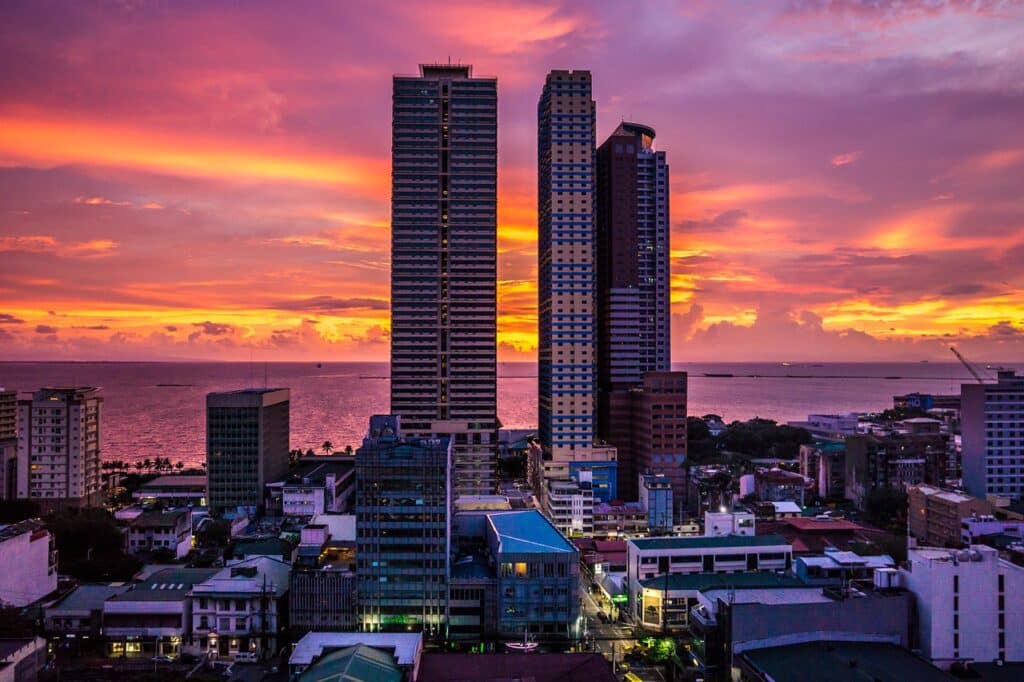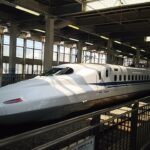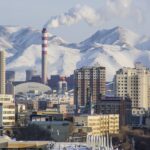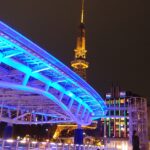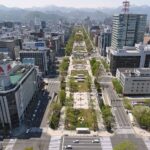The Manila Metro Rail Transit (MRT) is the main form of public transport in Manila, the capital of the Philippines. The MRT consists of three lines: Line 3, Line 4, and Line 7. The Light Rail Transit Authority runs it as an electric railway system. The MRT currently has a total of 37 stations that serve commuters from all over the city. The MRT provides a fast and reliable way for commuters to get to their destinations in Manila. It is a convenient and safe way to travel, and many tourists and locals use the MRT every day to get around the city.
Metro system in Manila: basic information
The Manila Metro Rail Transit System (MRTS), commonly known as the MRT, is a rapid transit system that primarily serves Metro Manila, Philippines. Along with the Manila Light Rail Transit System and the Metro Commuter Line of the Philippine National Railways, the system makes up Metro Manila’s rail infrastructure. Since then, most of the newly proposed rapid rail lines within Metro Manila that are not under the jurisdiction of the Light Rail Transit Authority are associated with the “MRT” brand.
The lines of the Manila Metro Rail Transit
MRT Line 3: Yellow
MRT Line 3, formerly known as the Blue Line, was renamed the Yellow Line in 2012. Following the north-south arc of Epifanio de los Santos Avenue (EDSA), the line travels in a circular pattern. The total grade separation and high passenger throughput make this system more analogous to a rapid transit system than a light rail system, despite sharing some characteristics with light rail (such as the tram-like rolling stock employed). The thirteen-station, 16.9-kilometer line, which had been planned in the 1970s and 1980s as part of various feasibility studies, opened to the public in 2000.
MRT Line 4
A 12.7-kilometer elevated train with 10 stations will connect Ortigas Center in Metro Manila with the suburban municipality of Taytay in the neighboring province of Rizal. It will run along Ortigas Avenue and Manila East Road, beginning at the New Taytay Public Market in the east and ending near the junction of Ortigas Avenue and EDSA in Quezon City in the west. The Department of Transportation had originally envisioned a “heavy monorail” similar to Chongqing Rail Transit’s Line 3, but in 2022, on the advice of project experts, the plan was changed to a conventional rail system.
MRT Line 7
The finished route will be 22.8 kilometers long, have 14 stations, and be the first third-rail-electrified route in the world. The line starts in San Jose del Monte, Bulacan, and ends at the North Triangle Common Station on North Avenue in Quezon City, moving in an east-west route. The project was first conceived in 2001 and approved in 2004. Additional plans are established for a capacity extension to support potential future passenger ridership. Passengers can take any of several road-based public transportation options, including buses, to and from a station and then transfer to their final destination on the Metro Manila public transit system.
Map of Manila Metro 2024: Free Download
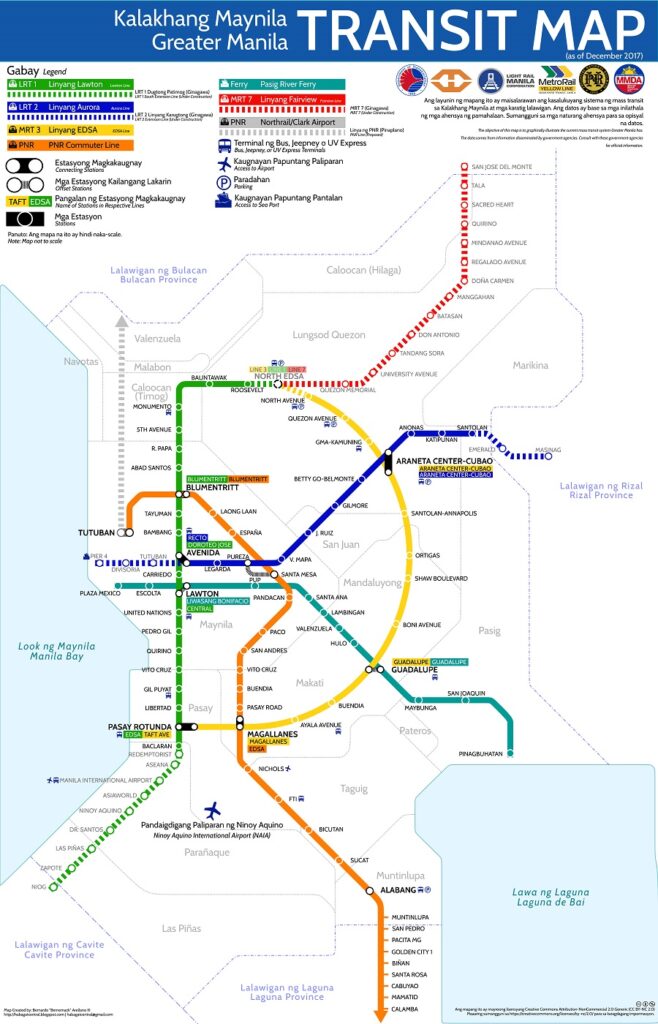
Click and download the map of Manila’s underground system for 2024
Anyone traveling to or residing in Manila should have a copy of the Manila Metro map. You can’t visit the city’s various sights without first downloading this free PDF. The map not only labels and describes the various train routes but also highlights significant sights and infrastructure. Its user-friendliness makes it an ideal companion for exploring the city.
Transport tickets in Manila: Best types for travelers
Light Rail Transit (LRT) and Metro Rail Transit (MRT) are the most popular forms of public transportation in Manila. Both are quick to complete and easy on the wallet. Purchasing a ticket is possible at any stop along these lines. A one-way ticket on the LRT will set you back about 14 pesos, while a similar fare on the MRT will set you back about 28 pesos. Both of these tickets allow for unlimited changes throughout the trip.
Many passes and cards can be purchased in addition to single-trip tickets. These are fantastic for frequent flyers and can lead to significant cost savings. Beep cards can be used on both the LRT and the MRT, and are contactless smart cards. This card can be purchased at participating stations and loaded with funds for use in paying for fares.
Finally, there are tourist tickets available for purchase. The Tourist Pass is your best bet if you plan to spend three days in Manila. The card costs 350 pesos and allows for unlimited trips on the LRT and MRT for three consecutive days. This is a fantastic deal for tourists who expect to use Manila’s public transportation system throughout their stay.
Summary of fares for public transport in Manila
- Fares on the LRT are 14 pesos for one trip while fares on the MRT are 28 pesos.
- Frequent flyers can save money by purchasing passes and cards like the Beep card.
- The Tourist Pass, which costs 350 pesos and is valid for three days of unlimited rides on the LRT and MRT, is highly recommended.
Timetables Metro system
The weekday hours of operation for the Manila Metro are 5:00 a.m.–11:00 p.m., and the weekend/holiday hours are 6:00 a.m.–11:00 p.m. There are four lines in the Metro system: the Purple, Yellow, Green, and Blue lines. The time of day and day of the week affect the schedules for each line. Both express and local services are available on the Metro, with the former arriving at stations every four minutes and the latter every eight. During rush hour, the Metro runs a second Purple Line service at a frequency of every six minutes.
Options For Public Transportation In Manila
The metro isn’t the only mode of public transit available in Manila. There are also taxis, jeepneys, tricycles, and buses available. In Manila, buses serve as the main mode of public transit, and their routes reach every corner of the metropolis. Tricycles are offered for short rides inside a specific area, whereas jeepneys are a cheaper option for longer journeys. Taxis are another common mode of transportation due to their vast availability, low flat rates, and diverse fleet.
public buses
The residents of Manila, Philippines, frequently use the city’s public bus system. Public buses are a helpful option for getting around the city when the roads are too congested to walk. The Metropolitan Manila Development Authority (MMDA) operates the city’s buses, which come in a wide variety of shapes and sizes.
The regular city buses are the most popular option for getting around Manila. The most cost-effective means of transportation, these buses are decorated in the Metro Manila flag’s colors. The best way to move around the city on the cheap is to follow the major routes and highways. If you’re looking for a relaxing ride, these buses are your best bet; they’re air conditioned, and some even offer Wi-Fi.
The air-conditioned “point-to-point” (P2P) buses are another popular choice for getting about Manila. These buses connect the city’s important destinations, like the airport, hospitals, and convention centers. You can travel in greater comfort than on regular buses, and your trip will be over much more quickly.
The buses operated by the Metro Manila Transit Corporation (MMTC) are the most frequently used in the city. Commuters may relax on these buses because of their air conditioning and Wi-Fi. They provide a quick and dependable means of navigating the city, and they tend to follow major thoroughfares.
Now we come to the “jeepneys.” These are the most recognizable and well-loved modes of public transportation in Manila. Jeepneys are open-air buses that often operate along main thoroughfares and are known for their bright colors. They are cheaper than other public transportation options, but they frequently run behind schedule due to high passenger loads.
public TRAINS in Manila
Light rail systems LRT-1 and LRT-2 operate on separate tracks and tunnels. The LRT-1 connects Baclaran and Monumento in Pasay City and Recto and Santolan in Manila and Pasig City, respectively. The city core and the rest of Metro Manila are easily accessible via both lines.
When it comes to railroads in the country, the PNR is both the oldest and largest. This highway connects the cities of Manila and Laguna, the provinces of Tarlac, Nueva Ecija, and Cavite, as well as other locations. From Manila’s Tutuban station to Laguna’s Calamba station is where the PNR’s main line travels.
The rest of Luzon can be reached from Manila through one of several interstate train routes. The Philippine National Railways runs the Bicol Express, a train that runs between Tutuban and Legazpi in Albay province. The Northrail line travels from Tutuban to Cabanatuan City in Nueva Ecija, while the Southrail connects Manila and Batangas City.
How Do I Get From Ninoy Aquino International Airport (MNL) To The City Center?
The Airport Loop Bus is one of the most hassle-free ways to reach downtown from the airport. From the airport to Makati, Pasay, and Manila, this bus leaves every fifteen to twenty minutes. Passengers can board at a number of convenient locations throughout the city and continue on to their final destination. Depending on where you’re going, the fare for the Airport Loop Bus might range from PHP 75 to PHP 90.
Taxis are available at Ninoy Aquino International Airport as an alternative. This taxi service is available around the clock and is a safe and dependable way to go to the heart of the city. Outside of the terminal’s Arrivals area, taxis can be hailed for PHP 70, with an extra PHP 4 added for every 250 meters traveled.
From the airport, you may easily reach the heart of the city by the Light Rail Transit 1 (LRT-1). From the airport, riders can take the Airport Skyway Express to Baclaran Station, where they can transfer to the LRT-1. Compared to the LRT-1’s fare of PHP 15, the Airport Skyway Express’s fare is PHP 110.
The Airport Bus is a low-cost alternative for travelers. The fee for taking this bus from the airport to downtown is only PHP 30. Makati, Pasay, Manila, and Quezon City are just a few of the places it visits.
3 days in Manila—what to do
Whatever you decide to do with your three days in Manila, you will never forget it. Manila is the ideal location for a brief vacation thanks to its fascinating culture, delicious food, and lively nightlife. Therefore, prepare in advance and make the most of your time in this fantastic metropolis!
First Day of Shopping and Sightseeing
Visit Intramuros, a fortified city built in the 16th century, first thing in the morning. Visit historic sites like Fort Santiago and San Agustin Church to gain insight into Manila’s Spanish colonial past. After that, you can go shopping at the country’s largest mall, the Mall of Asia. Everything from name-brand necessities to unique gifts from the area may be found here.
Second Day: Local Cuisine and Customs
On your second day in Manila, explore the city and learn more about the local way of life. Binondo is the oldest Chinatown in the world and a great place to start the day. Dim sum and noodle soups, among other delectable Chinese and Filipino specialties, may be found here. When you’re done, you must try authentic Filipino street cuisine. For delicious Lechon and other delicacies, head to the bustling Quiapo Market.
The Third Nighttime Activities Day
On your third day in Manila, you should explore the city’s exciting nightlife. Clubbing, karaoke, and more can be found at Pasay’s Entertainment City. After that, head to Malate, a popular area filled with taverns, pubs, and live music. Take a stroll along the Manila Baywalk and take in the sights for a more leisurely activity.
What other metro systems are nearby Manila?
Although the metro system in Manila is quite vast, it is not the only one in the region. Cebu City, Clark, Subic Bay, and Davao City all have metro systems, and there are more in the surrounding area. Manila’s central location makes it simple to visit any of these metro areas within a day’s travel time. Extended hours, enhanced accessibility, and spacious train compartments are just a few of the ways in which each metro system sets itself apart. The ease with which both locals and visitors can travel throughout the area is a major selling point for each of these metro systems.
VIDEO TOUR GUIDE ABOUT PUBLIC TRANSPORTATION IN Manila
Summary of our tour guide for Manila
For the past six years, I have made heavy use of Manila’s public transit system while I have lived and worked here. I’ve been taking public transportation in the form of buses, jeepneys, tricycles, and the Metro Rail Transit (MRT) ever since I arrived. Depending on the time of day, Manila’s public transportation networks can be either extremely helpful or quite hectic. Commuters swarm the area around rush hour, making it difficult to find a seat. However, it’s a cheap way to get around town, and the vehicles are generally in good shape. I have come to rely on the public transit system in Manila, and have had largely favorable experiences with it.
Top 5 FAQs and answers about Manila public transport?
- What kinds of transportation are there, first of all?
- Public transportation in Manila ranges from buses and jeepneys to tricycles, taxis, and even trains. Buses are the most popular kind of public transportation due to their low cost and high reliability. Jeepneys are the most vibrant and recognizable mode of transportation in Manila, and they are convenient for getting around the city on shorter journeys. Tricycles, which are powered on three wheels, are convenient for short commutes. Taxis are another alternative, but they are typically more expensive. Light Rail Transit (LRT) is the primary rail service in Manila and is a fast and convenient way to go around the city.
- What are the ticket prices?
- The price of your ticket will change based on the mode of transportation you choose. Prices for bus tickets range from roughly 8-10 pesos to 20-30 pesos for longer journeys. Short jeepney rides cost around 10 pesos, while longer ones cost around 20-30. The minimum fare for a tricycle is between 10 to 15 pesos. The flag-down rate for a taxi is about 40 to 50 pesos, and the rest of the fare is calculated based on the distance traveled. Short LRT rides cost about 15-20 pesos, whereas longer ones cost about 50-60 pesos.
- Where can I purchase tickets, please?
- There are ticket booths at bus stops, and you can also buy tickets directly from the driver. A jeepney’s driver is responsible for taking in payments from passengers. The driver of a tricycle is responsible for taking in payments from passengers. Taxi rides typically include cash payments made directly to the driver. You can buy your LRT fare at any of the station ticket vending machines.
- Is there a coupon code or promotional deal I can use?
- There are, indeed, deals and promotions to be had on some modes of transportation. Students and seniors can ride the LRT for less. Disabled passengers are eligible for discounts on buses and jeepneys.
- Is it secure to use public transportation?
- Although it is typically safe to use Manila’s public transportation system, it is nevertheless wise to exercise caution, such as not using the system late at night or when you’re by yourself. Passengers are a common target for pickpockets and bag snatchers, so keep your valuables close at all times and out of sight. Also, before getting on, double-check that the vehicle is in good working order and that you have the necessary fare.
Useful links

